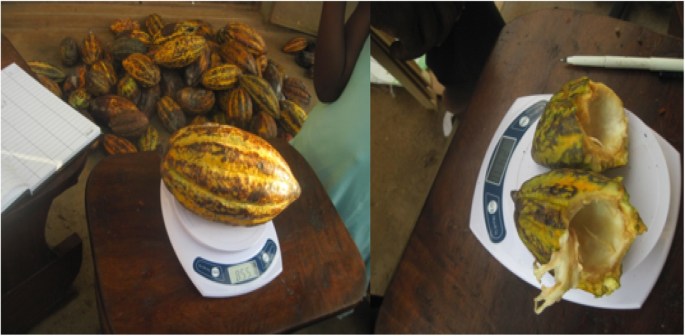- Il topic è vuoto.
- AutorePost
- Aprile 14, 2025 alle 5:45 am #626459

Cocoa production, while globally significant, generates a substantial amount of by-products that are often discarded or underutilized. These include cocoa pods, shells, mucilage, and even cocoa husks—all of which hold untapped potential.
Through the valorization of cocoa by-products for enhanced farm income and reduced waste, farmers and processors can unlock new revenue streams, reduce environmental impact, and create a more circular and sustainable cocoa economy.
Turning waste into wealth not only supports economic resilience but also strengthens sustainability across the value chain.
1. Repurposing Cocoa Pod Husks For Organic Fertilizers
Cocoa pod husks, which make up a large portion of harvest waste, can be transformed into nutrient-rich organic fertilizers through composting or biochar production. These natural soil enhancers improve fertility, increase water retention, and reduce the need for chemical inputs.
By using composted husks on their own farms, cocoa producers lower input costs and promote soil health, while surplus compost can be sold locally. This practice supports regenerative agriculture and contributes directly to improved productivity and sustainability.
2. Utilizing Cocoa Shells In Animal Feed And Energy Production
Cocoa shells, a by-product of bean processing, are often discarded, yet they contain valuable nutrients and calorific content. When properly treated, cocoa shells can be used as an ingredient in livestock feed or as biomass fuel. In animal nutrition, they provide fiber and energy, especially for ruminants.
Alternatively, their high lignin content makes them suitable for use in briquettes or pellets as a renewable energy source. These applications reduce waste and create valuable co-products that diversify farm income.
3. Extracting Valuable Compounds From Cocoa Mucilage
Cocoa mucilage—the sweet, sticky pulp surrounding the beans—has traditionally been wasted during fermentation. However, it can be collected and processed to extract sugars, pectin, and bioactive compounds.
These can be used in juice production, natural sweeteners, and cosmetic or pharmaceutical applications. With increasing consumer demand for natural and sustainable ingredients, cocoa mucilage valorization presents an exciting opportunity for farmers and processors to tap into high-value markets beyond traditional cocoa sales.
4. Creating Artisan And Value-Added Products
Valorization of cocoa by-products for enhanced farm income and reduced waste also encourages local entrepreneurship. Cocoa waste materials can be used to produce a variety of value-added goods, such as handmade soaps from cocoa butter residues, exfoliating scrubs using shell particles, or decorative crafts from dried pods.
By developing small-scale processing units and tapping into local or niche export markets, farming communities can generate employment, promote innovation, and build more inclusive rural economies.
5. Encouraging Research, Training, And Market Access
For cocoa by-product valorization to succeed, farmers need access to knowledge, processing tools, and market connections. Research institutions play a vital role in identifying practical uses for cocoa waste and developing low-cost processing technologies.
Extension services and training programs can equip farmers with the skills to turn waste into products. Moreover, building supply chain partnerships and developing fair trade opportunities for by-product-based goods can help farmers reach broader markets and secure premium prices.
The valorization of cocoa by-products for enhanced farm income and reduced waste represents a transformative shift toward circularity in cocoa farming. By unlocking the hidden value in pods, shells, mucilage, and other waste streams, farmers can improve profitability, reduce their environmental footprint, and strengthen the overall sustainability of the cocoa industry.
Embracing this innovative approach not only helps manage waste responsibly but also paves the way for more resilient and diversified farming systems in cocoa-producing regions around the world.
Read Also: Cocoa/Cacao (Theobroma cacao)
- AutorePost
- Devi essere connesso per rispondere a questo topic.

